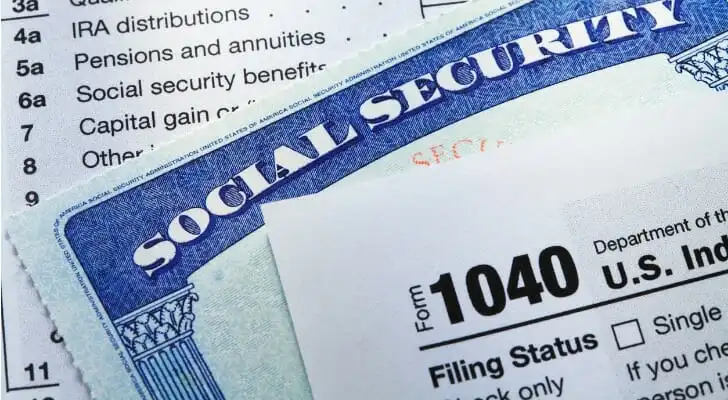The maximum Social Security benefit in 2022 is $4,194 per month or $50,328 for the year. Most people do not get that much, though. To get the maximum you would have had to postpone benefits until age 70. You also would need to have earned the maximum taxable amount ($147,000 in 2022) for at least 35 years. For people who start receiving benefits at full retirement age (66 or 67, depending on when you were born), the maximum amount in 2022 is $3,345. That said, the average Social Security check as of July 2022 is $1,670.95. To make sure you have enough in retirement to maintain your current lifestyle, consider talking to a financial advisor.
The Maximum Social Security Benefit and How to Get It
As mentioned above, in 2022, the maximum Social Security benefit is $3,345 per month if you started receiving benefits at full retirement age (66 now and 67 for people born in 1960 or later). There’s only one way to get more than that: wait until age 70 to receive the true maximum benefit of $4,194. But for most people, receiving even $3,345 is a stretch. Here’s what you would need to do to maximize your benefit.
Work for at Least 35 Years
The Social Security Administration (SSA) calculates your final benefit amount based on your earnings for the 35 years when you made the most. It then indexes your annual earnings, which is to say it adjusts for inflation, and then takes the average of the 35 indexed amounts. If you have income for less than 35 years, the SSA will give you a zero for those years short of 35.
That’s why it’s important to have income for at least 35 years. Those zeroes can bring down your average significantly. The government used to send out people’s annual earnings histories, but stopped in 2011 to save money. It’s a good idea, though, to check periodically what the government has recorded for you so you can make any needed corrections. You can do this easily by creating an online Social Security account.
Work Until Full Retirement Age
Another step you can take to maximize your Social Security benefits is to work until your full retirement age (FRA). Originally, this number was set at 65. But it has been steadily creeping up, thanks to the passage of the Social Security Amendments of 1983 (H.R. 1900, Public Law 98-21). Starting in 2000, the full retirement age has been increasing in two-month increments so that it’s 67 for people born in 1960 or later.
If you don’t wait till your FRA, the earliest you can start receiving Social Security is 62 years old. However, your benefit will be reduced by up to 30% if your FRA is 67 in this case.
…Or Go All the Way and Work Until 70
The longer you hold off receiving your Social Security benefits, up to age 70, the bigger your check. So each month after you’ve reached your FRA, your payout increases by roughly 0.7% percent (assuming your FRA is 66), which amounts to 8% per year. If you wait till age 70 then, your payments will be 32% bigger than if you had started taking benefits at 66. Once you turn 70 though, there is no added benefit in postponing payments.
Of course, working until 70 isn’t for everyone, and there’s no penalty in claiming your benefits when you reach your FRA. At that time, you will receive 100% of your benefit. It’s also not a sure thing that waiting until 70 maximizes your lifetime benefit. After all, should you pass away the following year, waiting that long will mean you received far less total benefits than if you’d claimed them as soon as you were eligible to. So consider your life expectancy as you make this decision.
Earn More at Your Place(s) of Employment
Of course, you don’t need this strategy to be your incentive for trying to increase your salary. But if you have some low-earning years in your 35-year work record (say, from part-time jobs during college), you’ll want to replace them with higher paying years. Or if you are thinking of working part time for several years, you may want to work full time for fewer years to have the higher income on your record.
Watch How Much You Earn in the Years Preceding Full Retirement
The SSA has imposed earning limits for individuals who have entered early and full retirement. Those limits, and the impact on your earnings, depend on how close you are to your full retirement age.
In 2022, an early retiree can make $19,560 in gross wages or net self employment earnings without penalty. Any overage will result in $1 deducted from the Social Security check for every $2 earned above this amount. Once you reach the year of your full retirement age, you can bring in $51,960 prior to the month of your full retirement birthday without penalty. For every $3 earned above this amount, the SSA will deduct $1 from your Social Security payment. These limits also affect the amounts family members can receive from your claim.
Once you’ve reached full retirement age, earnings do not impact your benefits.
Avoid Social Security Tax Traps
The IRS uses four elements to determine when Social Security benefits are subject to income tax. These four elements comprise what the service calls provisional income. They are:
- Capital gains and dividends
- Half of Social Security benefits
- Nontaxable interest
- Ordinary income (including wages and IRA withdrawals)
Either up to 50% or up to 85% of your benefits can be subject to federal taxation. In 2022, income tax is imposed on 50% of your Social Security check if your provisional income falls between $25,000 to $34,000 for single filers and $32,000 to $44,000 for joint filers. Single filers with more than $34,000 of provisional income and joint filers with more than $44,000 can look forward to an income tax on up to 85% of your Social Security benefits.
For example, a married couple withdraws $30,000 from an IRA and receives $40,000 in Social Security. Half of that Social Security money – $20,000 – is used for the IRS equation and is combined with the $30,000 IRA withdrawal to bring the couple’s provisional income to $50,000. Since that is above the $44,000 threshold for couples, then up to 85% of their Social Security is taxable.
If you’re looking to avoid this, try reducing your taxable income to reduce the amount of taxes. This can be achieved by looking at all of your adjusted gross income (AGI) and evenly distributing your funds over the span of a few years, so there are no sudden increases or decreases.
How to Determine the Best Return for Your Spouse/Domestic Partner

Married couples have two ways to receive Social Security benefits. A person can claim benefits based on his or her own earnings, or delay claiming them and take half of the partner’s payout instead. To be eligible, a marriage must be a minimum of 10 years old, but the relationship need not be current. In other words, you can be divorced, though if you are claiming the spousal benefit, you cannot be remarried.
Generally, the higher earner should delay claiming benefits based on his or her record. But if that person worked for fewer years and has zeroes on his or her record, you’ll want to compare how much your Social Security checks will be at FRA to decide. If your check is bigger, it makes sense for you to claim your spousal benefit and delay filing for the benefit based on your earnings until you’re 70 (your spouse has to file too, in order for you to receive your spousal benefit). When you turn 70, then, you would file for your benefit. If your check is more than twice as big as your spouse’s benefit, he or she should now file for the spousal benefit.
Another advantage of this strategy: Should the higher earner die first, the widow or widower would receive the larger benefit.
Let Your Family in on Your Social Security Benefits
In addition to your spouse, your minor children who are biological, step- or adopted can receive payments that amount to one-half of your full allocation on a monthly basis. Each individual needs to fit certain parameters to receive these benefits. There is also a limit to the amount your family members can claim based on a worker’s earnings record. This is also known as a family benefit maximum (FBM). This maximum only applies when there are multiple-payment recipients on one record.
Tips for Retirement Planning
- As you approach retirement, you may be uncomfortable keeping your savings in the stock market. In that case, you may want to buy an annuity. A financial advisor can help you determine what makes the most sense. Finding a qualified financial advisor doesn’t have to be hard. SmartAsset’s free tool matches you with up to three financial advisors in your area, and you can interview your advisor matches at no cost to decide which one is right for you. If you’re ready to find an advisor who can help you achieve your financial goals, get started now.
- Even after you max out your benefits, chances are Social Security won’t pay as much as what you earned. To make up the difference, you’ll need to draw on your nest egg. To find out how large a nest egg you’ll need, use our award-winning retirement calculator.
Photo credit: © iStock/DNY59, © iStock/RainStar, © iStock/g-stockstudio

